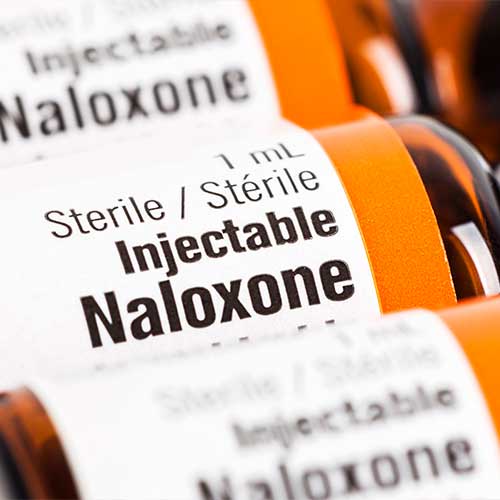February 2019
Opioid Overdose Basics
Prescription opioids (like hydrocodone, oxycodone, and morphine) and illicit opioids (like heroin and illegally made fentanyl) are powerful drugs that have a risk of a potentially fatal overdose. Anyone who uses opioids can experience an overdose, but certain factors may increase risk, including:
- Combining opioids with alcohol or certain other drugs
- Taking high daily dosages of prescription opioids
- Taking more opioids than prescribed
- Taking illicit or illegal opioids, like heroin or illicitly manufactured fentanyl, which could possibly contain unknown or harmful substances
- Certain medical conditions, such as sleep apnea or reduced kidney or liver function
- Being more than 65 years old
Signs and Symptoms of an Opioid Overdose
During an overdose, breathing can be dangerously slowed or stopped, causing brain damage or death. It’s important to recognize the signs and act fast. Signs include:
- Small, constricted “pinpoint pupils”
- Falling asleep or loss of consciousness
- Slow, shallow breathing
- Choking or gurgling sounds
- Limp body
- Pale, blue, or cold skin
What to Do if You Think Someone Is Overdosing
It may be hard to tell if a person is high or experiencing an overdose. If you aren’t sure, it’s best to treat it like an overdose—you could save a life.
- Call 911 immediately.
- Administer naloxone, if available.
- Try to keep the person awake and breathing.
- Lay the person on his or her side to prevent choking.
- Stay with him or her until emergency workers arrive.
Death from an opioid overdose happens when too much of the drug overwhelms the brain and interrupts the body’s natural drive to breathe. To learn more about opioids to protect yourself and your loved ones from opioid abuse, addiction, and overdose, visit these resources:
- Centers for Disease Control and Prevention Opioid Overdose
- Substance Abuse and Mental Health Services Administration
- Health Resources and Services Administration
Source: FDA.gov



